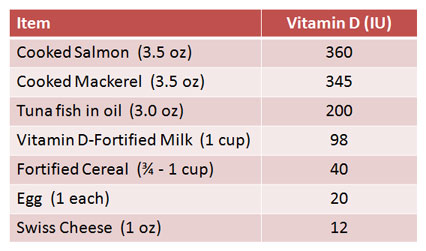Proper Growth and Development Requires Vitamin D
Proper growth and development requires sufficient amounts of vitamin D mainly because without it, the body cannot absorb calcium. Calcium and phosphorus are the major minerals in bone and if vitamin D is lacking, these minerals are not deposited in bone. This results in slow growth and other health issues including seizures and sluggishness. However, a vitamin D deficiency can exist without any physical symptoms so it is important to get adequate amounts on a daily basis.
Daily Recommendation Has Doubled
The American Academy of Pediatrics now recommends that infants, children and adolescents obtain 400 international units (IU) of vitamin D every day, which is double the previous recommendation. This guideline is based on recent evidence that children and adolescents may not be getting enough of this vitamin and the occurrence of extreme vitamin D deficiency (rickets) among infants and adolescents in the United States is of particular concern. The safety of giving infants and children 400 IU of vitamin D per day has also been established, and research indicates that getting enough calcium and vitamin D throughout childhood reduces the risk of osteoporosis and other diseases later in life.
Most Kids Don’t Get Enough Vitamin D
The body can produce vitamin D when exposed to UV rays from the sun (without sunscreen). However, the ideal amount of sun exposure for sufficient vitamin D production varies based on individual skin pigmentation, and the safety concerns of daily unprotected sun exposure make it difficult to recommend that people meet their vitamin D requirements by spending time in the sun. In addition, there are very few natural sources of vitamin D as presented in Table 1. Fortified milk is a good source for children and adolescents, but there is evidence that milk intake has declined in recent years. To get the daily recommended amount of vitamin D, kids would have to drink approximately four cups (32 ounces) of vitamin D-fortified milk every day.
Table 1 – Vitamin D Content in Food

Summary of Recommendations
- Breastfed infants should receive a daily supplement of 400 IU starting within a few days after birth. This includes infants who are given formula in addition to breast milk. This ensures adequate intake of vitamin D. Liquid supplements can be obtained from your health care provider.
- Formula fed infants who do not consume at least 1 liter or 1 quart of formula per day should be given a vitamin D supplement to obtain 400 IU per day.
- As infants are weaned from breast milk or formula, vitamin D fortified milk and/or a daily supplement should be given to reach 400 IU per day.
- Older children and adolescents who do not get 400 IU from fortified foods should take a multivitamin or vitamin D-only supplement to reach 400 IU per day. The dotFIT KidsMV multivitamin was formulated to help meet the needs of all youth between two to 11 years.